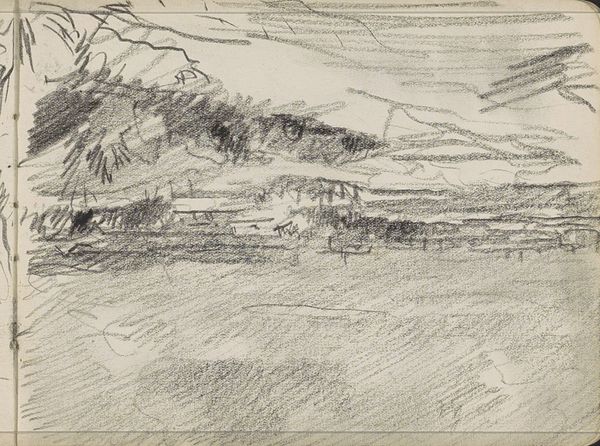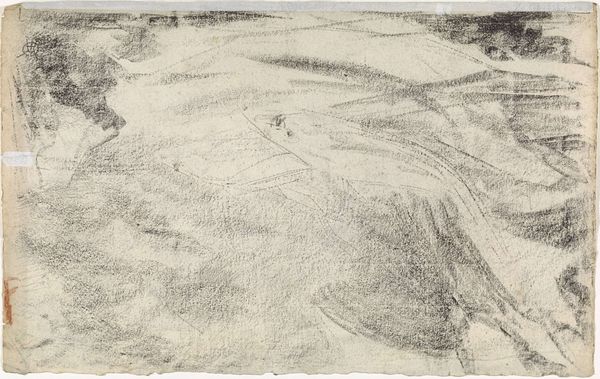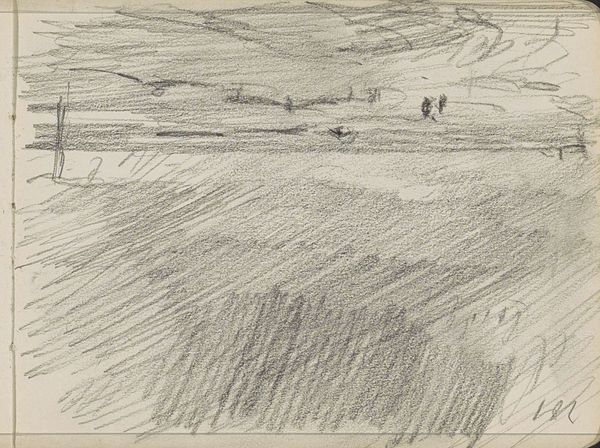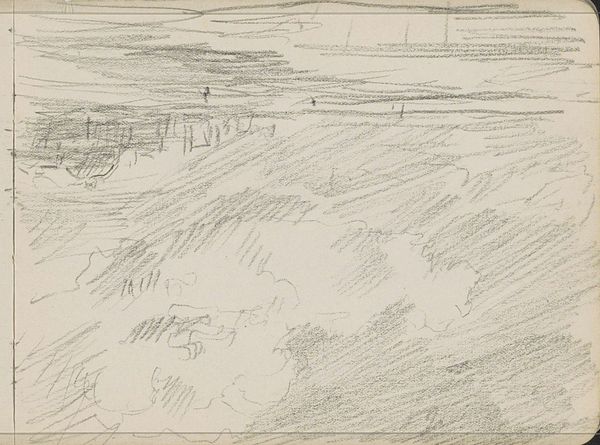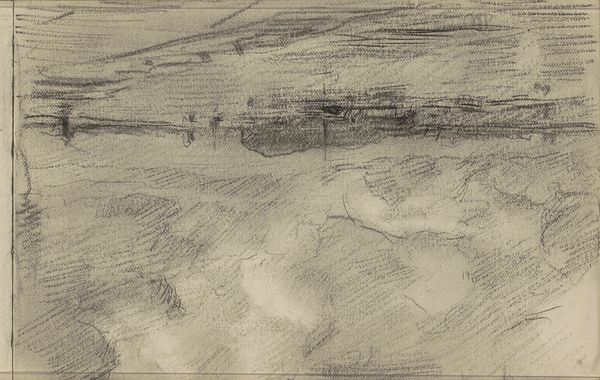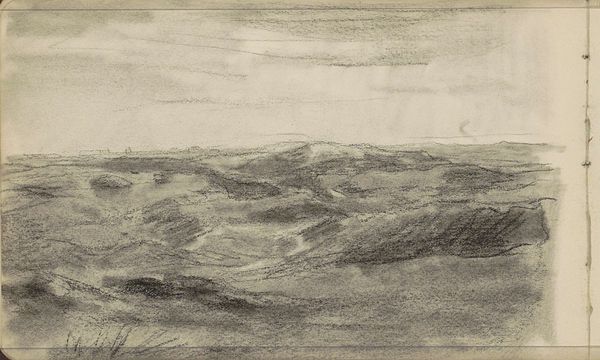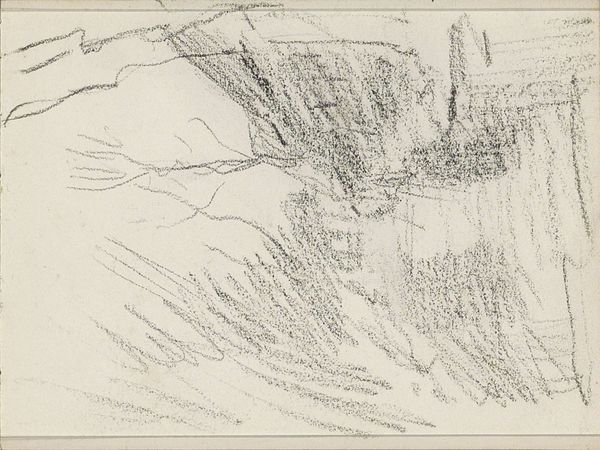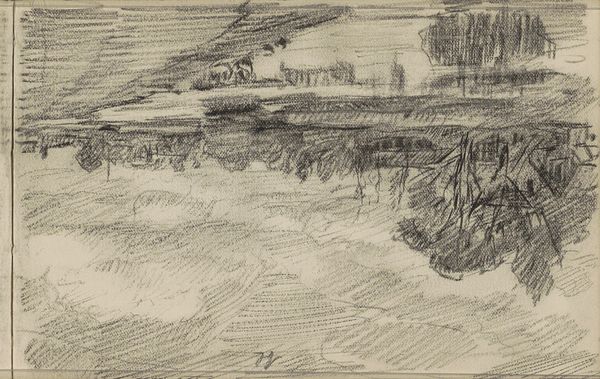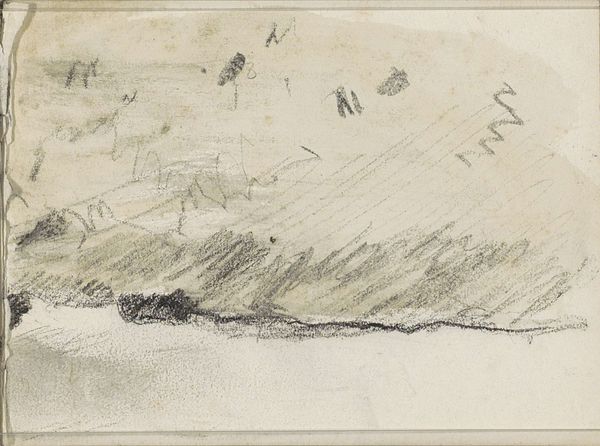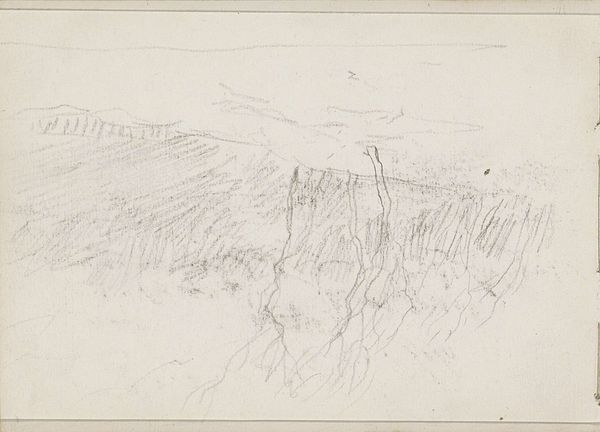
Copyright: Rijks Museum: Open Domain
Curator: This is "Zeegezicht," a pencil drawing by Johan Antonie de Jonge, created sometime between 1884 and 1927. Editor: My immediate reaction is one of starkness. The pencil work gives the scene a raw, almost unfinished feel. There's a powerful sense of the elements at play. Curator: Indeed. De Jonge was working in a period where the portrayal of landscapes moved towards capturing atmosphere and emotional response. The medium—pencil on paper—lends itself well to immediacy and a certain kind of documentary rawness, very popular as art became part of everyday life through the rise of sketching as social practice. Editor: The turbulent strokes portraying the water, for instance, almost vibrate with restless energy. But there’s a strange, still quiet in the distant sky. It is evocative, this duality—a constant feature of seascapes from diverse artistic movements over centuries. The ocean’s symbolic significance as a force of both creation and destruction makes it quite powerful. Curator: The timeframe of its creation is important, too. Consider the societal shifts and rapid industrialization that defined the late 19th and early 20th centuries. A piece like this can be interpreted as a form of resistance, a harkening back to the sublimity and overwhelming power of nature, things increasingly diminished in urban-industrial life. Editor: Absolutely. The monochrome palette enhances this sense of elemental struggle. Look at how the artist renders light—it’s not necessarily about visual accuracy, but more about capturing an emotional truth, a sense of place remembered and internalized. Even the horizon line, though present, is not clearly demarcated; land and sky become almost one. This blurring effect encourages one to consider human experience more than mere visual fidelity. Curator: Precisely. It's through that synthesis—a subjective viewpoint with objectively observable forms—that a humble drawing transcends simple depiction and turns into social commentary on environment, individual versus society, even art-making. Editor: I find myself moved by its humble qualities; just a pencil, a sheet of paper, and the vastness of the sea contained within. It reveals that power and impact can exist beyond grandeur and technical bravado. Curator: A thoughtful counterpoint, and a fine testament to the drawing’s sustained engagement with its audience. Thank you.
Comments
No comments
Be the first to comment and join the conversation on the ultimate creative platform.

